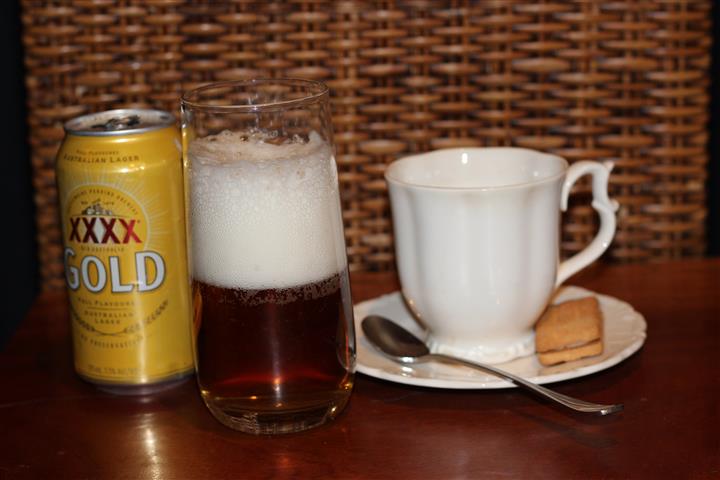It’s complicated . . .
Host: Liveringa Station
Written by Peter (Jed) O’Brien – Station Manager, Liveringa Station.
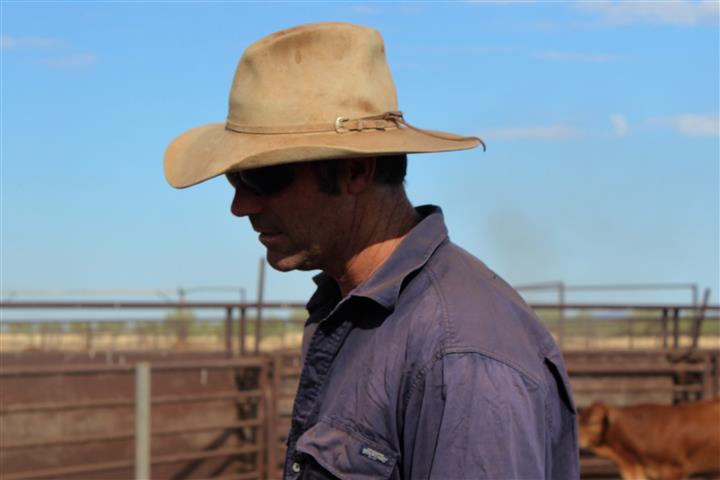 Peter (Jed) O’Brien.
Peter (Jed) O’Brien.
A couple of years ago I had a coffee with a friend and beef industry leader in the south east. He made a jovial comment about cattle management in northern Australia, suggesting that northern cattle producers have adopted a new management practice up there; it’s called “weaning” . . .
It was a throw away comment suggesting that the northern beef industry has only recently evolved from the dark ages of a harvest and bush type operation that requires little management, to one that now weans their calves as a small first step to more sophisticated cattle management strategies.
I realised that there was tongue in cheek, but I fear that this insinuation may be a common perception of our broader industry. I should have gone in to bat and argue the contrary for all northern cattle producers, but I let it go. If I was to put forward a case to oppose this notion, using Liveringa as my case in point, it might have sounded a little like this:
Timely weaning is the most important management tool we have; it is the foundation of our mustering program. But the management of northern beef properties reaches far beyond the weaning process. Let me try to outline some of the complexities of contemporary northern station management.
Liveringa is a little different to many other stations. Many years ago, as part of a large scale farming venture, the Inkata feedlot was built here. In more recent years, three centre pivots have been constructed where we can grow cattle forage. These assets are now integral to our operation, particularly as part of the weaning program.
During the weaning muster, in a typical yarding at Liveringa, we could have up to 1000 breeder cows, plus calves, in the yard. The eight person stock camp team, along with the team at the station yard, set out to draft (sort) these cattle into many different lines or categories. All the cattle are worked through the yard until they walk up the drafting race. Here they are sorted into lines or classes of stock. In this blog I will try to outline what cows go where and why, then what happens to them during and after the muster/yard process.
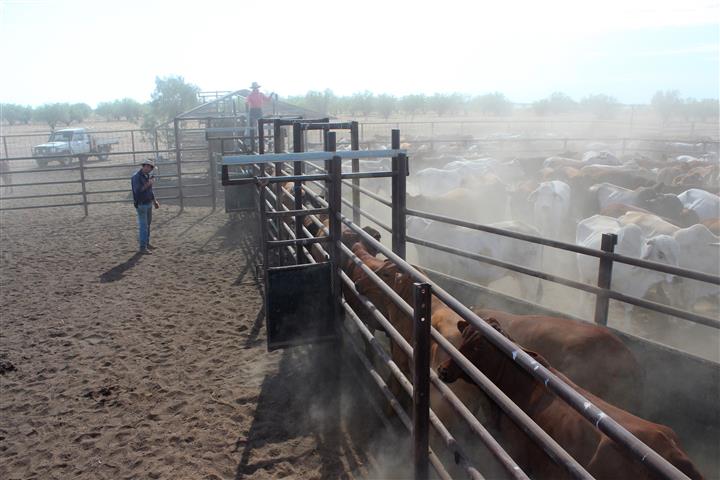 Drafting cattle up the race.
Drafting cattle up the race.
The breeder cows in the yard will be one of two different lines; wet cows and dry cows. No, one of the ringers didn’t leave some sprinklers on … a wet cow is lactating cow. She enters the yard with a calf, she may or may not be pregnant. A dry cow is not lactating and has no calf; they are often pregnant. The wet cows go up the race to be counted, their ear tags are scanned and processed and they all end up together in a front yard, ready to go back to the paddock.
Dry cows go through the draft and out to a side yard. They need to come back around later to be pregnancy tested.
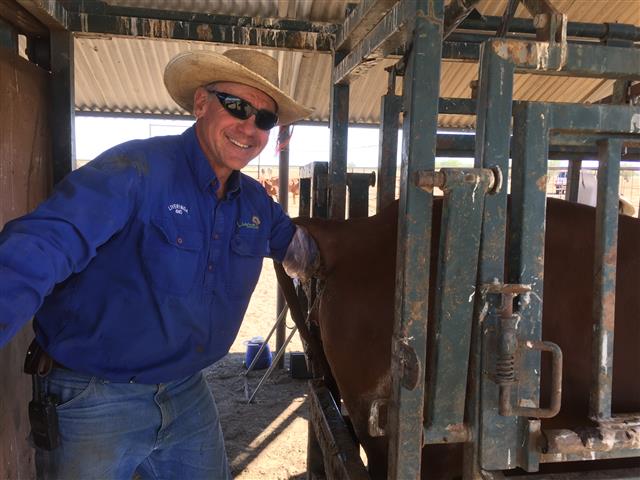 Henry pregnancy testing.
Henry pregnancy testing.
The calves follow the cows through the yard to the draft. To avoid mismothering and calf losses, those calves too small to wean (still needing milk to survive) go straight out into the wet cow yard. Bigger calves go into a different yard for weaning. Later in the process this weaner group will be drafted again and processed into about eight different lines.
There is another yard set aside for any cull cows; these are cows we want to remove from the breeder group. They may be aged cows, cantankerous cows, old herd bulls, or scrubber/feral bulls and those cattle that we just don’t like the look of. It usually takes about a full day to work the entire mob through the yard.
The wet cows and young calves will comprise of about 60% of the mob. It is important to allow them to leave the yard as soon as we can. When the cows leave the yard we can’t tell which cows own the calves and which left a weaner behind, so we need to let the calves go with the all of the ‘wets’. These animals are walked away with horses and held on water until the young calves can reunite with their mothers. Later in the season, these wet cow paddocks will be re-mustered to remove these calves that will by then be big enough to wean.
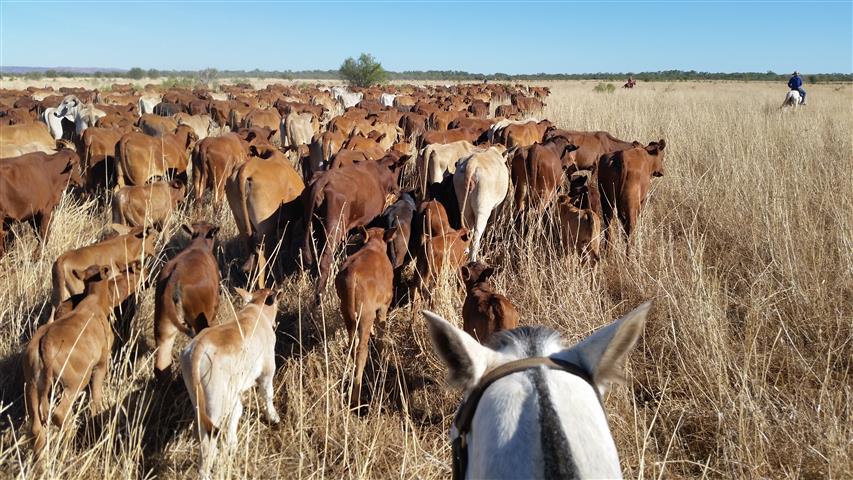 Walking cattle away.
Walking cattle away.
Conscious of the other cows still in the yard, the stockcamp will need to get on and draft and truck and “bush” (let out) those remaining, and probably feed them some hay. The weaner group is drafted into many different lines. All the smaller weaners; male and female, between 90 and 130kg, are trucked to the homestead yard where they will spend of couple of months in the feedlot. Through the feedlot we are able to wean small weaners as well as large ones. This allows more cows to go through the dry period dependent free. Alternatively, they would have to support a calf through the toughest period of the year. After weaning a cow will hold condition, re-conceive sooner, or at the very least survive the dry.
Heifer (female) weaners will be branded and bushed into a paddock. When the weaning round is done, these will be re-mustered and drafted into heifers as potential breeders and heifers not for breeding. The “not for breeding” group will later be spayed or sold. The breeder group will be divided again into those large enough to breed this year and those for next year.
The male portion of the weaner mob are drafted three ways. Heavy weaner bulls and steers are trucked to the station yards and held in a paddock or the feedlot until we can assign them to export through Broome. Mid-range male weaners are also trucked to the station yard and are held for a week to be tagged, dipped, fed, inspected free of ticks, and dipped again before being trucked to agistment in the south west. These are expected to reach a sale/export weight before the end of the year. The male weaners that are too small to reach sale weight this year are castrated and bushed into the paddock with the heifers.
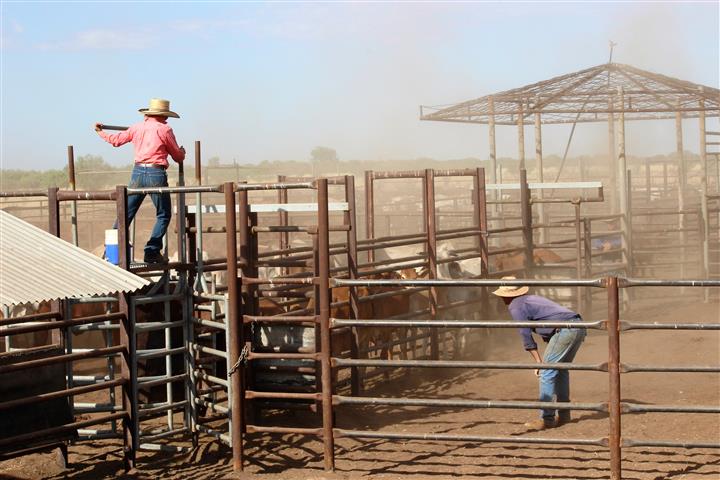 Grace working on the ‘sticks’ – the system of gates which allows separation of stock into different pens. Jed is calling wets and drys.
Grace working on the ‘sticks’ – the system of gates which allows separation of stock into different pens. Jed is calling wets and drys.
So that’s the weaning process, it’s complex; some are feed lotted, some transported south, others sold to export, some kept for joining, some held til next year, and the less pretty ones lined up for spaying. And they are all branded and recorded onto the computer program.
Just when the truck driver thought he had an empty yard, we now have to truck the cull cow line back to station yard for processing. These cattle are drafted two ways, animals ready for slaughter and cows that need to be spayed. The slaughter cow line is weighed, drafted, dipped, held for a week, dipped again then trucked to a meatworks south of Perth. Those not ready for slaughter, for whatever reason, will be bushed to a paddock near the station yard and brought in at a later date for spaying.
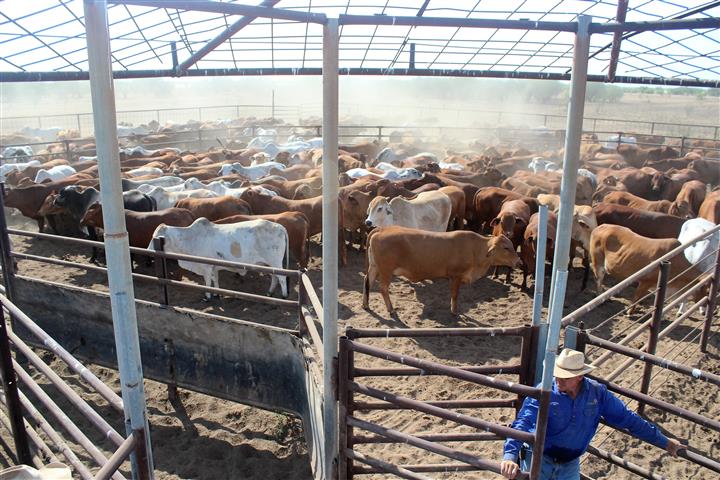 Wets and drys in different yards.
Wets and drys in different yards.
Now we still have dry cows standing in the yard. This group needs to be pregnancy tested, where they are drafted and segregated three ways. Empty (no calf) cows are considered non-productive cows and will be trucked the station yard to join the slaughter group. Pregnant cows due to calve pre-September go into a separate paddock. These cows will be mustered in November when we can wean their calves, probably into the feedlot. Weaning these calves just before the wet will give their mothers a chance to reconceive during the wet. Cows that are due to calve around October and beyond will go bush to another paddock and won’t be seen again until after they calve next year. The bulls run with the cows all year round at Liveringa, this is why we have such a variety of cows in the mob all at different stages of pregnancy or lactation.
This entire process of mustering, drafting, weaning, trucking and walking cattle away, dipping, feeding and branding can take up to a week for each paddock, some shorter, some longer. When the yard is emptied, the process will start again for the next paddock. And the program continues on through to the end of the dry season. Through the whole process, everything we aim to achieve is done so with the cow’s well-being in mind. Healthy cows are productive cows.
So it’s a big deal. We go through this process about twenty times during the dry season. There is a big cast involved in the process too. The eight man stockcamp drafting and trucking, our road train driver, three staff at the station yard weighing, dipping, feeding and trucking. There’s the Farm team producing the hay and silage for all the cattle in the yards. A bore mechanic to keep the water up to the other 20,000 head not in a yard, a grader driver to keep the roads open, and three mechanics to keep all the wheels turning. We need two cooks to feed all these people, someone to keep the place clean and another to keep it green. Then Karen in the office to keep them all paid and to purchase the goods we need. Not to forget the Home Tutor to teach the next generation. If my maths is correct we have about 27 staff, all doing their thing the best they can.
Then there’s me trying to manage the whole debacle. The wets, the drys, the weaners, the keepers, the sellers. The trucking and the walking, the paddocks, the grass and the grazing, the forage and the feeding. The waters, the floods, and the fires. The people and the politics, those that need to move on and all those that just want to visit.
Yet I’m no different to many other station managers in the Kimberley. Station management in the north is far more diverse and sophisticated than perhaps perceived, with many stations around Liveringa searching for and adopting the latest in research and development, and technology too.
So, has Liveringa adopted this new management practice they call weaning? Well I think it’s all a little more complicated than that now. The age old concept of weaning is simple enough, but there are many complexities to how Liveringa’s management model revolves around it.
Perhaps I should have had that conversation with my friend over a beer instead of a coffee. Maybe then I might have then been more compelled to push my point! But I fear that my argument may have then become even more convoluted and long winded than that outlined above, and my mate may have walked from the bar, leaving me to continue my rambling alone . . .
